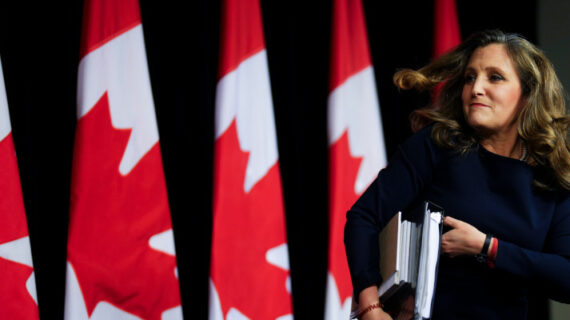Large-scale protests erupted across France in recent days and President Macron’s government only narrowly avoided collapse. The reason? A move to raise the retirement age from 62 to 64.
For a country whose population is ageing and where public pensions already account for 14 percent of the economy, compared to only 5 percent in Canada, this is hardly a radical move. But clashes with police and hundreds of arrests resulted nonetheless.
This is far from a uniquely French affair. Germany’s pension system is heavily strained and the government is contemplating big changes. A majority of advanced economies will soon see retirement ages increase.
Closer to home, the U.S. Social Security system’s days appear numbered.
By 2033, the Trust Fund that sustains the retirement incomes of elderly Americans will run dry. Payroll tax revenues levied on current workers fall far (far!) short of benefits paid to retirees, so taxes will have to rise or benefits will fall.
It is difficult to overstate the scale of their problem. The Congressional Budget Office estimates taxes on workers will have to immediately and permanently increase by 4.9 percentage points to sustainably fund retirement incomes. Alternatively, benefits received by retirees would have to be cut by between one-quarter to one-third. That’s not a typo.
Worse, it is problem largely ignored by politicians in a system where compromise is a four-letter word. The further this can is kicked down the road, the heavier it will become.
So where does Canada fit into all this? Can younger workers today—some of whom will live to see the 22nd century!—rely on the Canada Pension Plan to withstand the test of time?
Fortunately, our system is an island of stability both today and well into the future.
Every three years, Canada’s Chief Actuary conducts a thorough analysis of the financial future of the pension plan. The latest assessment, completed a few months ago, reveals that despite an ageing population, lengthening life expectancies, a declining labour force participation rate, and other factors, the current payroll tax rate and benefit levels are sustainable over any reasonable horizon.
The reason is simple: investment income.
Within a few years, contributions by workers will be insufficient to cover benefits paid to retirees. Since the late 1990s, however, we have been over-contributing and accumulating the excess into a fund now worth over half a trillion dollars. By 2035, it is projected to double to more than $1 trillion.
These savings are invested and should fund roughly half of the future retiree benefits, more than compensating for the shortfall from workers.
Of course, much depends on demographics and investment returns, and nothing is set in stone. But regular reviews and a significant cushion mean any future reform to ensure sustainability (if ever required) would involve a modest nudge rather than wholesale change.
If the investments earn a 6 percent average annual return—much lower than the ten-year average return of over 10 percent—the fund will grow faster than benefits, and cover a gradually increasing share of pensions.

It wasn’t always like this. We are benefiting from reforms in the late 1990s.
Back then, the CPP was set to run dry by 2015. So governments across the country—including Jean Chrétien’s, Ralph Klein’s, and Mike Harris’, who did not see eye-to-eye on many things—agreed to some gradual changes to secure our public pensions.1If you are interested in this history, I highly recommend Fixing the Future. It’s a 2008 book by Bruce Little that dives into details and includes interviews with all the key players.
Hard work by Paul Martin, Alberta’s Jim Dinning, and Ontario’s Ernie Eves nailed down the details and brokered compromises. A combination of modest benefits reductions and contribution increases successfully charted a new, sustainable course for the CPP.
Not all were on board, to be clear. Eight of the ten provinces agreed while British Columbia and Saskatchewan did not.2Two-thirds of provinces representing two-thirds of the national population are required for changes to the CPP. The move to secure the CPP even sparked interest among some in Alberta that the province should go its own way. Payroll tax increases were particularly unpopular among Conservatives, although even provincial New Democrats campaigned against benefit cuts. A separate Alberta Pension Plan remains a stated (though potentially unserious) priority for the provincial government even today.
None of this means reform should be off the table in Canada.
Some want improvements in the CPP fund’s management, given its relatively high cost. And increasing the retirement age may be defensible. The federal government’s previous move to reverse an increase in the eligibility age from 67 to 65 in our Old Age Security system, for example, was effectively adding a financial burden on taxpayers equivalent to raising the GST by one point.
But Canada has the luxury of enacting reforms at its own pace. The current system is by all analyses sustainable, so reforms are unlikely ever to be required.
Our past success in CPP reform demonstrates that governments can work across party lines within our sometimes fractious federation to implement smart policy focused on our long-term future. Something we see too little of today.
It’s an incredible success story that distinguishes us from countries struggling with difficult reforms enacted under immense pressure.
It’s an achievement we should celebrate more.




